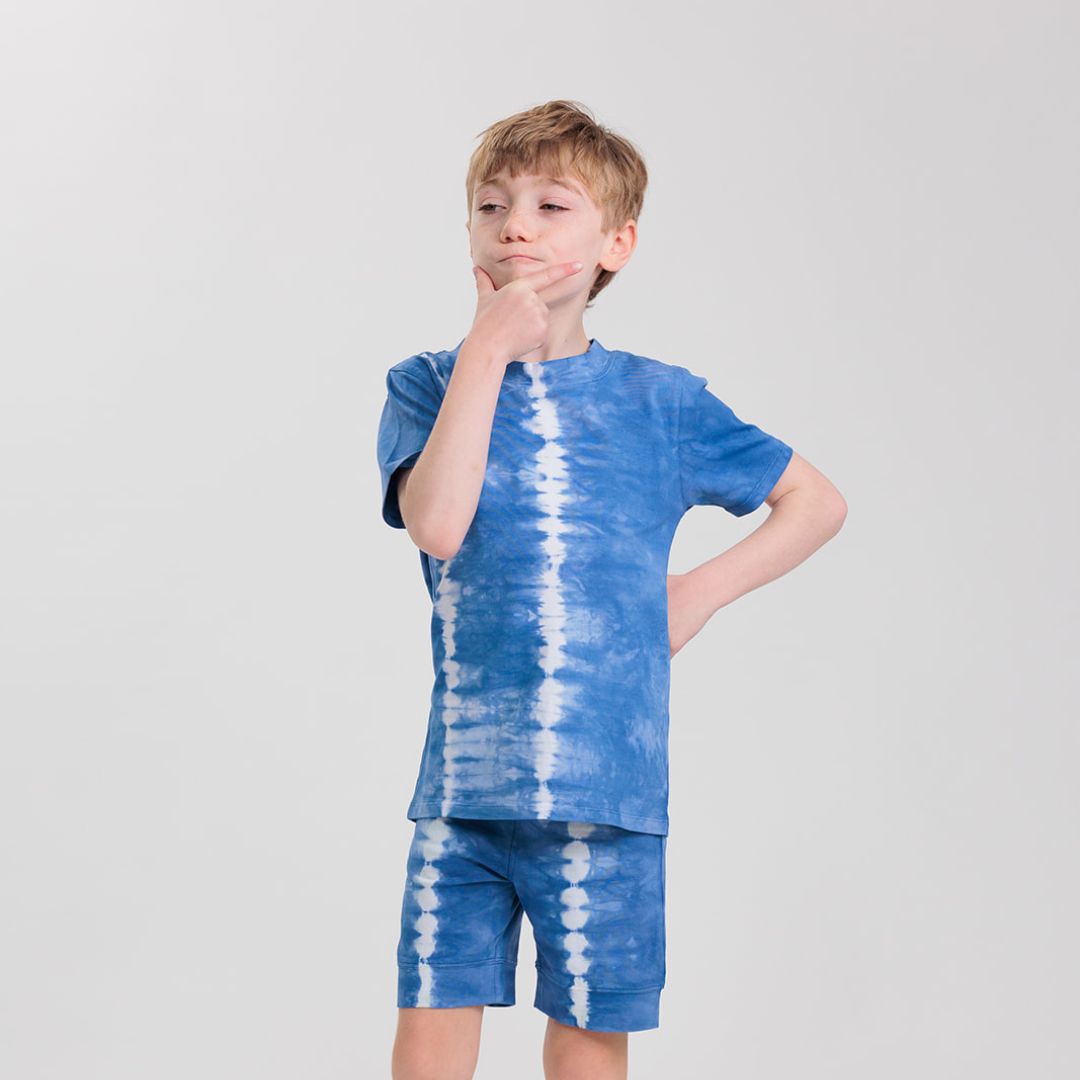Offer
Provide additional details about the offer you're running.
This store requires javascript to be enabled for some features to work correctly.

Every eco-conscious parent appreciates when brands promise that their children’s clothing is sustainable. The problem is that many of these promises are empty! Greenwashing—the misleading practice of marketing a product as environmentally friendly when it is not—is widespread in the retail industry, and kids’ clothing brands are no exception. Read this quick guide to spotting greenwashing in kids’ clothing brands so you can become the ultimate sustainable shopper!
Greenwashing is a deceptive marketing strategy that companies use to falsely portray their products and manufacturing processes as environmentally friendly. This growing practice preys on the trending demand for sustainable and ethical products, manipulating customers to believe they are more sustainable than they actually are. Additionally, greenwashing doesn’t just exaggerate the company’s environmental benefits. It can also downplay the ecological impacts of a company’s offerings through misleading claims, vague language, and an unsubstantiated green brand image.
By projecting a greener image than reality, these companies aim to increase their sales and improve their brand image without significantly reducing their environmental footprint. Or, as we like to call it… lying to customers!
The term “greenwashing” originated from an environmentalist named Jay Westerveld in 1986 when he observed the dubious practices of the hotel industry. In a published essay, Westerveld pointed out the hypocrisy in hotels that placed placards in guest rooms, encouraging guests to reuse towels for the sake of the environment. He wrote that these requests were less about conserving water and more about reducing laundry costs. Additionally, little to no savings were redirected toward genuine environmental conservation efforts or even hotel improvements!
This critical observation by Westerveld marked the beginning of the broader recognition of greenwashing as a deceptive marketing practice. It wasn’t just about the towels; it was about companies exploiting environmental messaging for economic advantage. This early instance of greenwashing illuminated the need for consumers to scrutinize the environmental claims made by businesses. It set the stage for the ongoing battle against corporate misrepresentation in the name of environmentalism and fair treatment toward consumers.
Retailers often use various greenwashing tactics to appeal to the eco-conscious shopper, so we need to recognize them and weed out the posers. One popular strategy is using vague, broad statements like “eco-friendly” or “green” without providing concrete evidence or certification to support such claims. This ambiguity allows companies to paint a greener picture of their products without making any substantial environmental commitments.
Additionally, brands might highlight a single green attribute, such as using natural resources, to divert attention from the less sustainable practices in their production or supply chain. This tactic, known as “green blurring,” creates a misleading perception of the company’s overall environmental impact.
Another common tactic is creating a false sense of sustainability through “green-themed” marketing and packaging. Companies often employ earth-toned colors, images of nature, and recycled-looking materials for their product packaging, which may suggest that the product inside is less harmful to the environment than it is. Furthermore, many brands engage in misleading labeling strategies, such as using unregulated environmental labels or self-created eco-certifications that lack credibility. These approaches are designed to instill trust and a green image in the minds of consumers without making meaningful changes to a brand’s environmental impact.
We can combat greenwashing with genuine and verifiable sustainability! Clothing brands committed to being eco-friendly should be transparent about their processes and environmental footprint. For clothing brands, this means providing detailed information about their materials, how they source them, and the environmental impact they create when manufacturing products.
Be skeptical of brands that use vague terms like “eco-friendly” without offering concrete evidence or details about their practices. Research the initiatives they claim to support—if a company claims to be “plastic-free,” you should look up how and where they’ve eliminated plastic. True sustainability goes beyond marketing; it’s about tangible actions and transparent communication about current successes and areas for improvement.
Sustainability is a complex issue. Don’t hesitate to contact clothing brands directly with your questions and take note of how they respond. Genuinely green businesses are eager to discuss their efforts and share information with buyers, while those with something to hide might be vague or dismissive. After questioning sustainability claims more and more, you will become an empowered, informed, and responsible consumer.
The circular economy represents a systemic shift from the traditional linear economy model, which follows a “take-make-dispose” approach, to one that is regenerative. In a circular economy, clothing brands design products with their entire lifecycle in mind, focusing on durability, reusability, and recyclability. For brands and consumers alike, adopting circular economy principles is crucial to reduce the environmental impact of consumer goods. This is especially important in industries like fashion, where waste production and resource consumption are notoriously high.
When looking to support brands that stick to circular economy principles, consider these key aspects:
Understanding greenwashing is a must for consumers who want to make environmentally responsible purchases. It helps them differentiate sustainable practices from marketing gimmicks so they can support genuine, eco-conscious clothing brands. Hopefully, more companies will pursue authentic sustainability efforts after more consumers understand greenwashing and how it’s used.
This helpful guide to spotting greenwashing in kids’ clothing brands is the first step in creating a more sustainable future. Both consumers and retail business leaders must commit to genuine eco-friendly efforts for greenwashing to end once and for all. Support a greener future, and find sustainable kids’ clothing today at Macrae Skye. Explore to learn how our team supports the environment!

And get 15% off your first order!